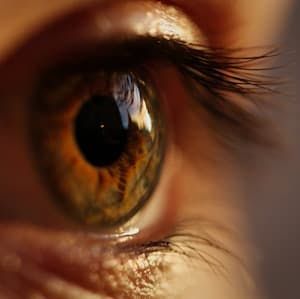Significant Decreases in Ocular Blood Flow Observed with Brolucizumab, Aflibercept Injections
Intravitreal brolucizumab and aflibercept in eyes with nAMD were each linked to a significant decrease in the ocular blood flow 30 minutes after injection.
Credit: Marc Schulte/Pexels

New research indicates intravitreal injections of brolucizumab and aflibercept in eyes with neovascular age-related macular degeneration (nAMD) were associated with a significant decrease in ocular blood flow at the optic nerve head and choroid 30 minutes after injection.1
The rate of decrease in the ocular blood flow was not found to be significant between eyes treated with brolucizumab and aflibercept based on the results; however, 3 of 10 eyes treated with brolucizumab showed more than a 30% decrease in ocular blood flow at the choroid from baseline to 30 minutes after injection.
“To the best of our knowledge, this study is the first to evaluate the short-term effect of brolucizumab on the ocular blood flow in eyes with nAMD,” wrote the investigative team led by Masatoshi Haruta, Department of Ophthalmology, Kurume University School of Medicine.1
Worldwide, AMD represents a major cause of irreversible blindness, and anti-vascular endothelial growth factor (anti-VEGF) agents, including brolucizumab and aflibercept, are widely used to treat nAMD. Haruta and colleagues indicated that, theoretically, the therapies might affect the ocular blood flow. Recent literature has indicated that intravitreal aflibercept treatment for nAMD was linked to a significant decrease in the ocular blood flow at the optic nerve head as early as 30 minutes after injection; however, there is a lack of information on these changes after intravitreal brolucizumab use.2
Regarding the differences in structure, dose, growth factor specificity, and VEGF binding affinity, Haruta and colleagues investigated the differences in short-term changes in the ocular blood flow in eyes with nAMD between the two therapies. A total of 10 eyes of 10 patients with nAMD treated with brolucizumab and 11 eyes of 11 patients with nAMD treated with aflibercept from April 2021 - June 2022 at Kurume University Hospital were included in the study. The exclusion criterion did not include pretreatment with intravitreal anti-VEGF agents, although the last treatment must have been received ≥6 weeks before study inclusion.
All patients underwent a comprehensive ocular examination prior to injection with the anti-VEGF, including a slit-lamp examination with indirect funduscopy and measurement of intraocular pressure (IOP) and the ocular perfusion pressure (OPP). Using laser speckle flowgraphy, investigators analyzed the rates of ocular blood flow at the optic nerve head (ONH MBR-vessel) and at the choroid (CHOR MBR) both before and 30 minutes after anti-VEGF injection. Intravitreal injections were successfully completed in all treated eyes and there were no adverse events, including intraocular inflammation, retinal vasculitis, and retinal vascular occlusion, observed during the injection or the follow-up period.
The analysis showed the ONH MBR-vessel and CHOR-MBR rates decreased by 10.8% and 15.2% from baseline to 30 minutes after intravitreal brolucizumab treatment, respectively. The decreases reached significance for both the ONH MBR-vessel and CHOR MBR (P = .006 and P = .001, respectively), according to Haruta and colleagues.
Data showed the mean IOP increased by 3.7 mmHg (P = .004) and the mean OPP decreased by 1.9mmHg (P = .17). Investigators noted there was no negative correlation found between the changes in the IOP and changes in either the ONH MBR-vessel or CHOR MBR (P = .308 and P = .702, respectively).
For those treated with aflibercept, the ONH MBR-vessel and CHOR MBR rates decreased by 9.9% and 6.8% from baseline to 30 minutes after injection, respectively, and both reached significance (P = .009 and P = .016). The analysis showed the mean IOP increased by 1.3 mmHg (P = .16) and the mean OPP increased by 1.5 mmHg (P = .64). Investigators found no negative correlation between the changes in IOP and changes in either the ONH MBR-vessel or CHOR MBR (P = .984 and P = .268, respectively).
Haruta and colleagues noted there was no significant difference in the rate of decrease in the ONH MBR-vessel or CHOR MBR between patients treated with brolucizumab and those treated with aflibercept. Although results from the recent HAWK and HARRIER trials suggested an overall well-tolerated safety profile of brolucizumab, investigators noted retinal vascular occlusion in patients with nAMD has been recently described in literature after intravitreal use.3
“The precise mechanisms of retinal vascular occlusion after intravitreal brolucizumab are unknown, and further studies are necessary to confirm whether the degree of decrease in the ocular blood flow is related to the development of retinal vascular occlusion after intravitreal brolucizumab,” investigators wrote.1
References
- Kato N, Haruta M, Furushima K, Arai R, Matsuo Y, Yoshida S. Decrease in Ocular Blood Flow Thirty Minutes After Intravitreal Injections of Brolucizumab and Aflibercept for Neovascular Age-Related Macular Degeneration. Clin Ophthalmol. 2023;17:1187-1192. Published 2023 Apr 18. doi:10.2147/OPTH.S407249
- Mursch-Edlmayr AS, Luft N, Podkowinski D, Ring M, Schmetterer L, Bolz M. Short-term effect on the ocular circulation induced by unilateral intravitreal injection of aflibercept in age-related maculopathy. Acta Ophthalmol. 2019;97(6):e927-e932. doi:10.1111/aos.14098
- Baumal CR, Bodaghi B, Singer M, et al. Expert Opinion on Management of Intraocular Inflammation, Retinal Vasculitis, and Vascular Occlusion after Brolucizumab Treatment. Ophthalmol Retina. 2021;5(6):519-527. doi:10.1016/j.oret.2020.09.020